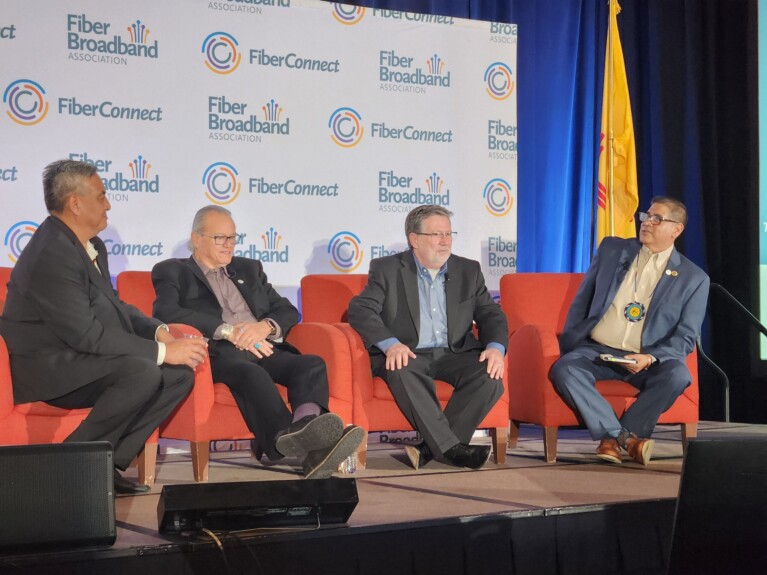Speeding Deployments by Speeding Locates
If every journey begins with a single step, then every fiber broadband network begins with a lot of paperwork. Before the first backhoe can break ground, most operators and construction contractors take necessary precautions to prevent damage to utilities, ensure utility services remain intact and uninterrupted, and prevent serious injury to people or property, including field installation teams and nearby residents.
Utility locates are arguably the most essential step that needs to take place before the physical act of construction begins, but the public and private organizations supporting the locate process are under increasing strain as fiber construction booms place unprecedented surge stress on municipalities, utility owners, and locate firms to provide timely location and marking of underground utilities.
According to the Common Ground Alliance’s 2022 DIRT report, late locates are preventing excavation on the planned start date at least 56% of the time. Digging without locates runs the risk of local and state fines that can come to tens of thousands of dollars per violation, even before factors such as liabilities for damage to existing utilities come into play.

Onsite locate equipment ensures proper deployment of conduit and reliable documentation once it is in place in the ground. (Source: TAK Communications)
Skipping the locate process is not an option, as underground locates are a public safety requirement to prevent costly interruption of services and repair of damaged lines and pipes. Further, utilities may not have accurate mapping of buried facilities due to a variety of factors, including the age of the infrastructure and its documentation, deviation of paper documentation from actual construction, and the difficulties of utilities and municipalities to get sufficient funding for accurate mapping to modern standards.
“The reality of fiber broadband deployment today includes difficult decisions around installing fiber underground, whether all affected utilities have performed locates within the state-assigned timeframe or not. Each state has different laws that govern installers when they decide to move forward without underground utilities being located and marked,” said Brendan O’Boyle, FBA Deployment Specialists Committee Chair, and PLP National Sales Manager-Communications Markets. “Underground line construction crews assume all responsibility when they proceed but are put into impossible situations to decide to move forward to stay within the time constraint required to complete the project. Understanding how to work with local permitting departments, HOAs, and other groups to ensure the locate process is smooth, fast, and efficient will be a key factor as operators look to move forward.”
Last year, the Deployment Specialists Committee reviewed the many issues involved in the locate process and discussed best practices to speed up the process in its “Accelerating Timeliness of Utility Locates” 14-page white paper, available for download by FBA members on the organization’s website.
The Problems with Locates
Many potential issues can lead to locate delays that will result in ripples throughout deployment timelines, increasing costs and affecting an operator’s ability to meet deadlines associated with funding grants.
One of the biggest factors affecting locates is available labor both at the administrative level and for field work. A local township or municipal government may only process a handful of locates per week or month, typically for new home construction or other building projects. Fiber broadband construction in an unserved or underserved area will require locates for a large number of addresses in the area, resulting in the need to process hundreds or more locates per month until construction is completed.
This bow-wave of locates means that administrative staffing may need to staff up and/or the locates process needs to become more efficient. It also puts pressure on the field workers who go out and find buried utilities and mark them, requiring them to either put in overtime or bring in outside labor to get locates done in a timely manner. Like fiber optic technicians, experienced locators are in short supply, and it can take anywhere from three to six months to train a locator. Without sufficient field workforce, installs can back up and ticket backlogs will continue to pile up.
The “Accelerating” white paper detail recommendations for improvements throughout the locate process, breaking them down into three categories of pre-ticket call-in preparation, ticket call-in process, and during the locate process and construction.
Pre-Ticket Call-In Preparation
Contacting the state’s 811 organization and understanding state-specific 811 laws and regulations is the first step for a more efficient locate process. Construction firms and project managers need to recognize variations in ticket types, completion requirements, and tolerance zones as applicable.
Engaging with all the stakeholders involved in or affected by construction should be undertaken, with state 811 centers, local damage prevention councils, HOAs, and others impacted by construction is vital. Everyone should be made aware of the project scope, blueprints, and other related materials in advance of construction to facilitate preparation and discover potential issues before field crews are on site clocking time and money.
All necessary permits should be secured before initiating a locate request to avoid delays and potential second requests because the available paperwork wasn’t available the first time. Proposed Installation paths should be white lined to minimize unnecessary locating time, providing a visual guide for locaters. Finally, limit the locate area to the required excavation zone, avoiding unnecessary extensions.
Ticket Call-In Process
Much of the advice in the ticket call-in process is common sense. Adhere to state 811 laws and regulations when initiating locate requests. Ensure the accuracy of contact information and appoint knowledgeable personnel as primary contacts on locates for effective communication; having an intermediary that doesn’t understand the process, or the build only causes opportunities for miscommunication or delay.

Construction managers should also plan on delays due to less-than-optimal locate labor resources. Locates may not be performed as fast as represented, especially if there’s a backlog of other requests.
During the Locate Process and Construction
Best practices during this phase of operation include potholing to visually identify utilities that are in the vicinity of the installation and maintaining regular communication with stakeholders. Periodic meetings should be held to ensure everyone affected by the process is on the same page as to what is happening and how it may affect them.
Notifying homeowners of the upcoming project by outlining the various steps of the process helps to make sure they are not surprised by construction crews and potential temporary inconveniences, such as traffic disruptions or noise. Implement proper damage prevention measures to mitigate utility damage to safeguard project timelines and company reputation.
Pay special attention to any “cleared” utility locations shortly after the ticket request was made, because the probability is high that it was cleared in error.
Smoother Locates, Faster Construction
The humble locate is a vital part of the construction process and it is important to not take it for granted. Many factors can delay locates, including the need for government and private sector stakeholders to scale processes to enable the larger number of locates necessary for a fiber project.
In addition, stakeholder participation is essential in making locates and the construction process go smoothly. Transparency and communications throughout the locate and excavation process can ensure that fiber project construction meets the expectations of all involved with minimal surprises along the way.





